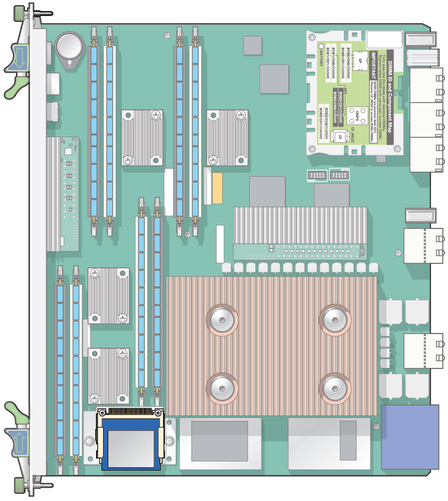| Skip Navigation Links | |
| Exit Print View | |

|
Netra SPARC T3-1BA Blade Server User’s Guide |
Documentation, Support, and Training
Evaluating Product Compatibility
Form-Factor Physical Characteristics
Warranty and Technical Support
System Requirements and Options
Installing Optional Components
Preparing to Install the Blade Server
Power and Thermal Distribution
Required Cooling and Blade Impedance Curve
Local Network IP Addresses and Host Names
Connect the External I/O Cables
Connect Cables to a System Console Running the Oracle Solaris OS
Connect Cables to a System Console Not Running Oracle Solaris OS
Insert and Latch the Blade Server
Software and Firmware Upgrades
Software and Firmware Upgrades
Firmware and Blade Server Management
Creating a Boot Disk Server and Adding Clients
Create a Boot Server for Diskless Clients
Compact Flash Formatting for the Oracle Solaris OS
Multiplex Configuration of Zones 2 and 3
Advanced Rear Transition Module Connectors (Zone 3)
Locate Base MAC Address on Blade Server
Configuring and Using Serial Over LAN
Shut Down OS and Deactivate the Blade Server
Power Off and Remove the Blade Server
A CF and mezzanine card (holds the CF) can be installed on the blade server for user flash. Due to the location of the CF slot, the blade server must be outside of the chassis for you to install a CF and mezzanine card. The CF is not hot-swappable. The maximum capacity is 32-GB.
See Safety Requirements.
If the blade server is installed in an ATCA shelf, remove the blade server.
If the blade server is new and not installed, unpack the blade server.
 | Caution - Do not place the blade server on top of an antistatic envelope unless the outside of the envelope also has antistatic properties. For detailed handling instructions and safety precautions, see Unpack the Blade Server. |

The connector on the mezzanine card must align with the connector on the blade server. Do not use force, or damage may occur to the connectors.
Note - CF cards have a life span of 2,000,000 write/erase cycles. Users are responsible for ensuring that the OS and applications do not exceed this maximum.